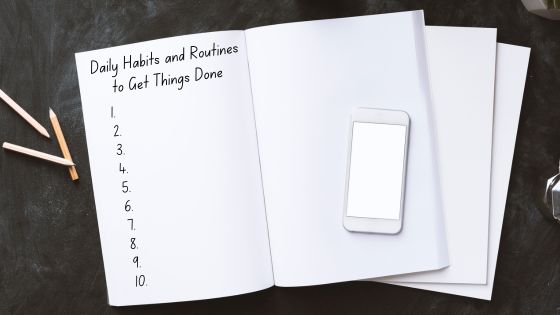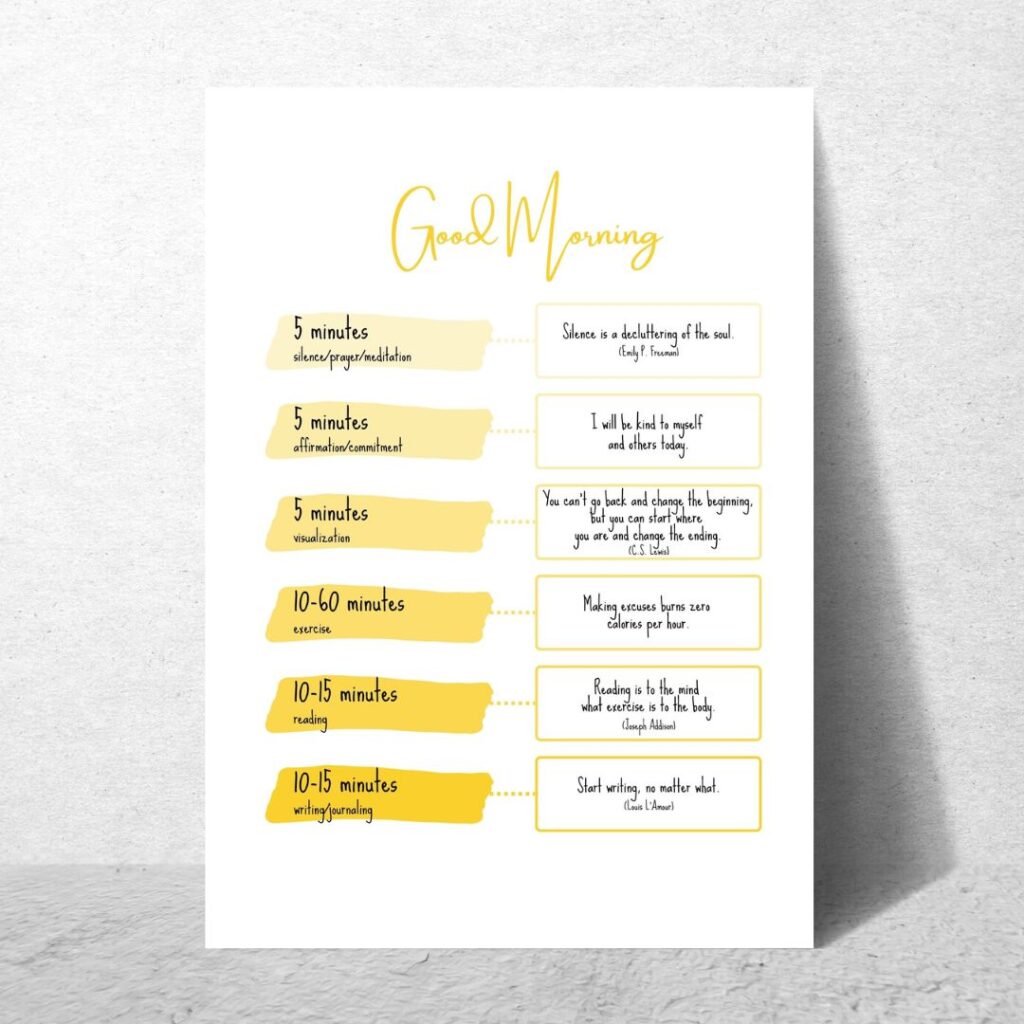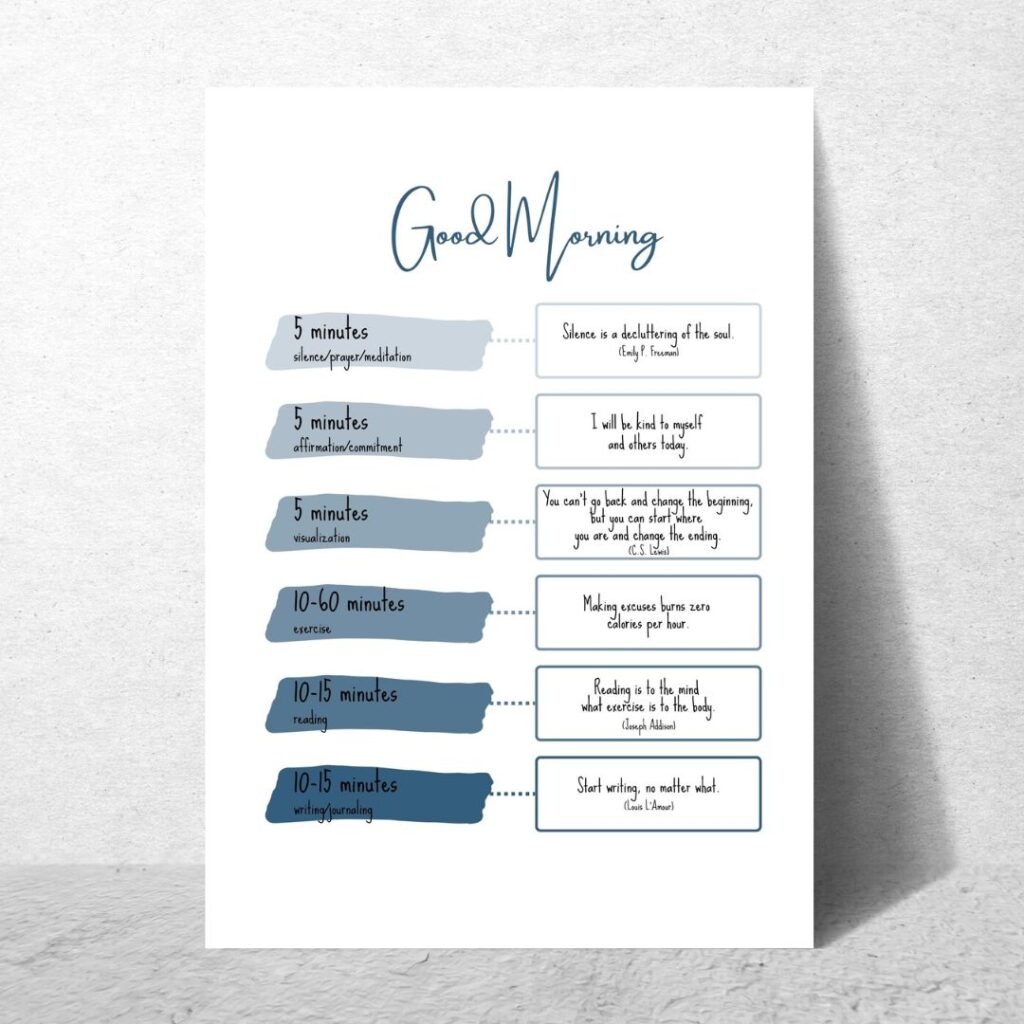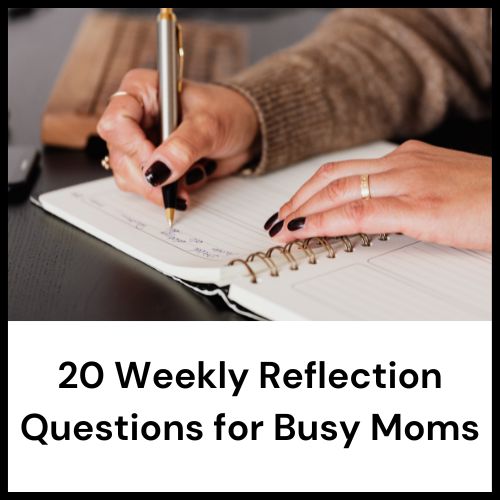The Habits and Routines that Help Me Get Things Done
Too much to do and not enough time! Between work, family, and personal commitments, staying organized and productive can feel overwhelming. While no single approach works for everyone, cultivating a set of daily habits and routines is one of the best ways to be intentional with your time. The goal isn’t to cram every minute of the day with activity but to ensure you’re spending your time on what truly matters. In this post, I’ll share 10 daily habits and routines that help me manage my time effectively, maintain focus, and make room for the things I value most—whether that’s work, rest, or connection.
- Morning Routine
- Evening Routine
- Calendar Check-in Routine
- Email and Social Media Check-in Routine
- Shutdown Routine
- Get Outside
- Movement
- Hydration
- Task Triage
- Task Capture

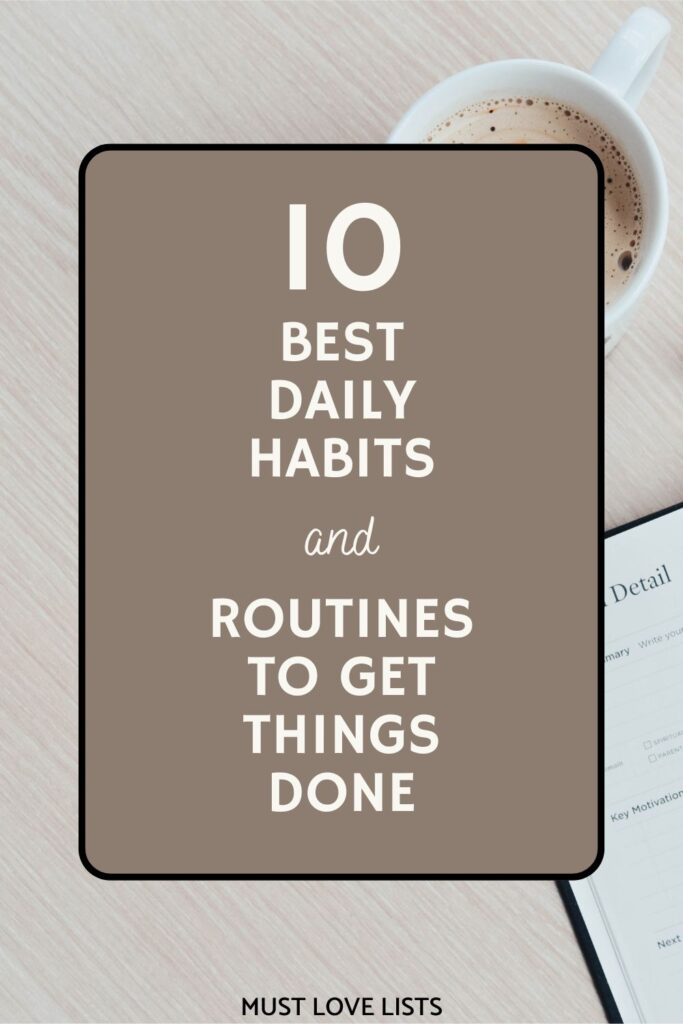
Morning Routine
The first daily habit or routine that encourages productivity is a morning routine. I should establish here that by productivity, I don’t mean just getting as much as humanly possible done in a day. I like to think about productivity as a way to allocate your time to things that matter to you, while not wasting time and effort on things that don’t. These things that matter include relationships, personal learning, and downtime, not just checking off tasks.
My morning routine changes from time to time, depending on my season of life or specific commitments, but having a morning routine helps start my day well and generally translates into a better day overall.
When I talk about a morning routine, I’m talking about the things I choose to do regularly between waking up and beginning whatever activity happens next—leaving for work or school, beginning work at home, caring for kids, homeschooling, volunteering, etc.
Obviously, if you’re being shaken awake by your toddler, your morning routine will look much different (read: chaotic and abbreviated), than if you have teens who wake up just in time to grab coffee and head out the door.
Don’t try to establish a morning routine that is constantly bumping up against your current reality. You’ll be discontent, frustrated, and potentially feel worse than if you didn’t try to have a morning routine at all.
When creating a morning routine, you may find it helpful to go analog and write down on paper the following sequence.
Steps to Create a Simple Morning Routine
- Brainstorm your ideal morning routine.
- List barriers to that ideal routine (time available, childcare responsibilities, energy, work responsibilities).
- Write down the items that must be included in your morning routine.
- Choose one item from your ideal morning routine that matters deeply to you and that you are unlikely to do daily if you don’t do it in the morning. For now, this is the only item you will add to your must-do morning routine list.
- Make that item small. Shrink the time commitment as much as possible when you get started.
- Try out your simple morning routine for 2-4 weeks and then reevaluate.
Let me explain the idea behind making your chosen morning routine wish list item small.
Perhaps you know that if you don’t exercise in the morning, you will almost never work out later in the day, so you want to make this the item you include in your morning routine. Instead of joining a gym and planning to go at 6am daily, running 3 miles, or completing a 45-minute yoga session, think small.
Commit to exercising 10 minutes every morning—a plank hold, some squats, a few stretches.
You will benefit from the repetition of creating a daily habit and as it becomes easier and more habitual, you’ll look for ways to grow that habit.
I’ve written about morning routines before, so I’ll link a couple of helpful articles for further exploration.
I’ll share my current morning routine below, as I know it’s fun to see what other people do. This is not prescriptive, just what I’m prioritizing right now. My morning routine takes about two hours and most mornings I get up between 5:30 and 6:30. Also, my routine changes with the sun! When the sun rises earlier, I start earlier and move my walk earlier.
- Bible reading & prayer (drink water)
- check planner/calendar for the day and week ahead
- quick exercise
- work (if still dark)
- 30-minute walk (pray & listen to 5-minute devotional podcast)
- get ready for the day (scripture memorization—posted in bathroom, listen to short news podcast)
- breakfast/vitamins/kitchen cleanup
- coffee
Read: Miracle Morning Routine Inspiration

Evening Routine
The second daily habit or routine that can help you stay organized and productive is an evening routine.
I’m going to be honest and say that I have struggled to build a consistent evening routine much more than a morning routine. But, I’ve made great progress and it has indeed made a huge difference in staying on top of the information overload that plagues most of us in the modern world.
An evening routine is a useful tool for ensuring that your mornings run smoothly and shutting down your brain for the night.
Elements to consider for your evening routine
- Kitchen reset (clean out sink, run dishwasher, wipe tables and counters)
- Quick tidy (pick up clutter from living areas)
- Physical prep for tomorrow (make lunches, pack backpacks, sports gear, etc.)
- Calendar check (look ahead at appointments, meetings, deadlines, etc.)
- Family check in (go over the schedule, who’s driving where, projects due, status of laundry, grocery needs, etc.)
- Planning for tomorrow (choose priority tasks)
- Calming activity (reading, stretching, journaling)
- Set a bedtime alarm or reminder
Calendar Check-in Routine
A third daily routine that will absolutely boost your organization and productivity is to schedule regular calendar check-ins.
At a minimum, you should check your calendar once a day, but more frequently may be helpful, depending on your situation. This is a check specifically to look at the day ahead, and into the week ahead to determine whether there are tasks that must be completed prior to a deadline and to remind yourself of what’s coming up.
My personal preference is to look at my Google calendar and my planner each evening after dinner and again in the morning as part of my morning routine. I don’t usually check my Google calendar too much during the day unless I’m using the calendar to add or change an appointment; instead, I rely on my Apple watch to let me know what’s coming up next.
Email and Social Media Check-in Routine
Number four on my daily habit and routine suggestions is an email and social media check-in routine.
If your job requires you to be extremely sensitive to emails because of highly important deadlines, your situation may be different. For many of us, the compulsion to check email as often as we do is just that—a psychological compulsion—not a necessity.
Choosing a few times per day to check and respond to emails will give you a much greater ability to focus on tasks that require creativity, problem solving, or deep thinking.
I’m currently working on this routine, with the goal of checking email after breakfast, after lunch, and after dinner.
Th second part of this routine involves being more intentional with social media use by setting specific check-in times for this, also.
We all know how distracting, and even mind-numbing, social media can be. It’s pretty common to pick up your phone to check Twitter or Instagram and look up 20-30 minutes later wishing you hadn’t wasted that time.
Although I’m not a heavy social media user, having a routine of checking in a few times a day helps keep me from opening up the apps in between. For me, those times correspond to my email check-ins. I like to group all the distractions together!
Read: 25 Ways to Waste Less Time on Social Media
Shutdown Routine
Moving on to the fifth daily habit or routine to enhance productivity—a shutdown routine. This routine is one that can be difficult to maintain, but has huge benefits when you make it part of your everyday life.
We’ve all experienced the frustration of sitting down to work in the morning and trying to remember exactly where we were on a project, what we’re waiting for from someone else, or which tasks are partially completed. Without a shutdown routine, you’ll spend unnecessary time figuring out what to do before you can starting doing anything. In addition, your brain keeps coming back to those open loops, keeping you up at night, popping up with random items to try and remember.
The main purpose of a shutdown routine is to know what you’re going to work on or do before you start doing it. While a shutdown routine can encompass additional tasks, the most important item to include is a note about the status of the work you’re doing.
- which tasks are completed
- anything you’re waiting on
- anyone you need to contact
- next steps in a project or task
Your goal is to look at this list or note and be able to seamlessly pick up where you left off, knowing exactly the next task to work on when you begin work again.
Other items to consider including in your shutdown routine:
- calendar check
- email and other messages check
- quick tidy of work area
A consistent shutdown routine at the end of your workday will result in less open loops in your brain that require you to continue thinking about whether or not you answered that important email, who you need to call, and what you need to work on next.
Task Triage
A sixth daily habit to increase your time organization and productivity is task triage.
It’s a very rare person who always completes everything on their task list for the day. Most of us overestimate what we can accomplish and underestimate the amount of disruptions we’ll encounter.
Having a daily routine of task triage will result in staying on top of the things that are most important, and delegating, delaying, or deleting other tasks as needed.
Choose one or two times each day to look at your to-do list and evaluate how likely it is you will be able to get those things done.
My preference is to do this twice a day.
The first task triage is part of my morning routine along with my calendar check-in. I look at my task list and physically highlight one to three priority tasks for the day.
The second task triage takes place after lunch. I revisit my task list and determine whether it is realistic to complete the tasks I’ve assigned myself for the day.
If I know that task cannot be accomplished with the time I have remaining, I have the choice to ask someone else to do it, move it to another day, or even remove it from my current tasks. Having a list of “someday/maybe” tasks and projects is very helpful as a place to park to-dos that you may want to revisit, but aren’t going to fit into your current circumstances for the foreseeable future.
Task Capture
Seventh on the list of productivity habits to incorporate daily is task capture.
You need a place to hold all those to-do list items that come into your mind at random times.
I have found it most effective to have both a physical task capture system, along with a digital task capture system.
A physical notebook open on my desk works to jot down things that come to mind when I’m in the middle of working on something. I don’t want to break my concentration and do this other task, but I don’t want to forget about it. A simple, lined notebook is perfect.
As a digital task capture system, I keep a note on my phone titled REMEMBER. This is where I put everything that pops into my head to remember throughout the day if I’m not at my desk.
The key is to limit the places you are capturing tasks. You don’t want to have to search through multiple notebooks, post-it notes, and digital files to find the piece of information you need, or worse yet, simply lose track of it.
It’s extremely important that you have a routine for checking and following through on the things you add to your task capture system, whether physical or digital.
This can be part of your daily shutdown routine. Go through the items you added to your notebook or digital note and put them where they need to go—on a calendar, in a planner, in a project management system.
Get Outside
Next up is incorporating a habit of getting outside daily. You might go for a walk at lunch, read a book in your yard, watch your kid’s soccer game, or drink your morning coffee on the porch. Our bodies need sunlight, even on gray, rainy days. Bonus energy and productivity if you can get outside first thing in the morning and watch the sunrise to set your circadian rhythm!
Movement
Most of us are sitting around way too much. You need some kind of daily exercise and movement throughout the day. It doesn’t have to be marathon training or bodybuilding, but you will find your energy, and therefore productivity, dramatically boosted by daily movement.
Don’t limit yourself to 30 minutes of exercise in the morning or after work. Take breaks to stand up and walk around. Stretch. Do some squats while you reheat your coffee for the fifth time (is that just me?)!
Hydration
Stay hydrated throughout the day. Don’t wait until you’re thirsty. Start your day with a glass of water. Keep water with you at your desk or in the car. If you’re addicted to caffeine, you may not realize how much more energetic you can feel without that dependence.
Daily Habits and Routines to Better Manage Your Time
Building better time management and productivity habits doesn’t happen overnight—it’s a process of trial, adjustment, and perseverance. By starting small and focusing on one or two habits at a time, you can gradually create routines that fit your lifestyle and priorities. The goal isn’t perfection but progress: using your time with intention and aligning your actions with what’s important to you. Whether it’s a morning walk, an end-of-day shutdown routine, or simply staying hydrated, these small steps can lead to significant improvements over time.
The important thing is to start now. Choose one daily habit or routine that feels manageable and implement it today. Tiny steps taken consistently will result in progress.
Visit my homeschool resources page for monthly unit study ideas, projects, and homeschool planning help!


